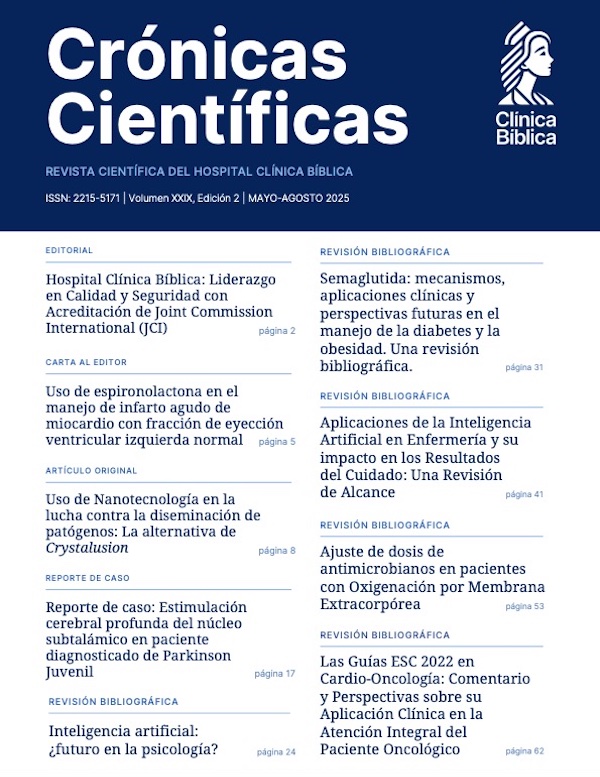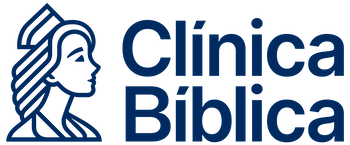- Visto: 1063
APA (7ª edición)
Alexandra-Jacobs, T., Goyenaga-Elizondo, I. (2018) Leishmaniasis. Crónicas Científicas, 9(9), 6-17. https://doi.org/10.55139/SOSJ7223.
Vancouver
Alexandra-Jacobs T, Goyenaga-Elizondo I. Leishmaniasis. Cron Cient, 27 de enero 2018; 9(9): 6-17.
Dra. Thalissa Alexandra Jacobs
Médico interno. Bloque de comunitaria, Ucimed.
Miembro del Colegio de Médicos y Cirujanos de Costa Rica.
Costa Rica.
Dra. Isabel Goyenaga Elizondo
Médico interno. Bloque de comunitaria, Ucimed.
Miembro del Colegio de Médicos y Cirujanos de Costa Rica.
Costa Rica.
Resumen
La leishmaniasis es una enfermedad infecciosa tropical causada por parásitos protozoarios del género Leishmania, que es considerada una enfermedad de los pobres. Es importante entender el ciclo de vida de este protozoario para elaborar intervenciones con respecto a la transmisión de la enfermedad, intervención terapéutica y además para la realización de una vacuna. El manejo de las manifestaciones clínicas es difícil, especialmente porque hay varias formas de presentación y aún falta que médicos en el ámbito mundial se familiaricen con los síntomas, particularmente en países no endémicos debido a la falta de conocimiento sobre la enfermedad. Las manifestaciones clínicas se dividen en: cutánea, mucocutánea y visceral. El diagnóstico se puede hacer mediante histopatología, cultivo, estudios moleculares (especialmente en casos donde los amastigotes no se visualizan), serologías y pruebas cutáneas. La eficacia del tratamiento varía con el tipo de especie y los patrones de resistencia. Esta revisión bibliográfica se basa en formar un resumen sobre la enfermedad incluyendo los avances más recientes para finalmente poder ser usado como manual de información.
Palabras claves
Leishmaniasis, avances, diagnóstico, vacuna, tratamiento, prevención.
Abstract
Leishmaniasis is a tropical infectious disease caused by protozoan parasites of the genus Leishmania, which is considered a disease of the poor. The life cycle of this protozoan is important to understand in order to elaborate interventions at the level of the transmission of the disease, therapeutic intervention and also for the realization of a vaccine. The management of clinical manifestations is difficult, especially because there are several forms of presentation and there is still a need for doctors worldwide to become familiar with the symptoms, particularly in non-endemic countries due to the lack of knowledge about the disease. Clinical manifestations are divided into: cutaneous, mucocutaneous and visceral. The diagnosis can be made by histopathology, culture, molecular studies (especially in cases where amastigotes are not visualized), serology and skin tests. The effectiveness of the treatment varies with the type of species and the resistance patterns. This bibliographic review is based on forming a summary about the disease, including the most recent advances to finally be used as an information manual.
Keywords
Leishmaniasis, advances, diagnosis, vaccine, treatment, prevention.
Bibliografía
1. Elmahallawy, E. K. et al. (2014). Diagnosis of leishmaniasis. J Infect Dev Ctries, 8(8), 961-972.
2. Gillespie, P. M. et al. (2016). Status of vaccine research and development of vaccines for leishmaniasis. Vaccine, 34(26), 2992-2995.
3. Handler, M. et al. (2015). Cutaneous and mucocutaneous leishmaniasis. Clinical perspectives. J Am Acad Dermatol, 73(6), 897-908. doi: 10.1016/j.jaad.2014.08.051
4. Handler, M. et al. (2015). Cutaneous and mucocutaneous leishmaniasis. Differential diagnosis, diagnosis, histopathology, and management. J Am Acad Dermatol, 73(6), 911-26, 927-8. doi: 10.1016/j.jaad.2014.09.014
5. Jain, K.; Jain, N.K. (2015). Vaccines for visceral Leishmaniasis: A review. J Immunol Methods. 2015 Jul;422:1-12. doi: 10.1016/j.jim.2015.03.017. Epub 2015 Apr 7.
6. Khamesipour, A. (2014). Therapeutic vaccines for Leishmaniasis. Expert Opin Biol Ther, 14(11), 1641-9. doi: 10.1517/14712598.2014.945415
7. Mansueto, P. et al. (2014). Leishmaniasis in travelers: A literature review. Travel Medicine and Infectious Disease, 12, 563-581.
8. McGwire, B.S.; Satoskar, A.R. (2014). Leishmaniasis: clinical syndromes and treatment. Q J Med, 107(1), 7-14. doi: 10.1093/qjmed/hct116.
9. Menezes, J. P. B. et al. (2015). Advances in Development of New Treatment for Leishmaniasis. BioMed Research International. doi: 10.1155/2015/815023
10. Okwor, I.; Uzonna, J. (2016). Social and Economic Burden of Human Leishmaniasis. Am J Trop Med Hyg. 94(3), 489-493.
11. Pace, D. (2014). Leishmaniasis. Journal of Infection.
12. Savoia, D. (2015). Recent updates and perspectives on leishmaniasis, Department of clinical and Biological sciences, University of Torino, Italy. J Infect Dev Ctries. 2015 Jul 4;9(6):588-96. doi: 10.3855/jidc.6833.
13. Singh, B.; Sundar, S. (2012). Leishmaniasis: Vaccine candidates and perspectives. Vaccine. 2012 Jun 6;30(26):3834-42. doi: 10.1016/j.vaccine.2012.03.068. Epub 2012 Apr 1.
14. Srivastava, S. et al. (2016). Possibilities and challenges for developing a successful vaccine for leishmaniasis. Parasites and vectors, 9, 277.
15. Torpiano, P.; Pace, D. (2015). Leishmaniasis: diagnostic issues in Europe. Expert Rev. Anti Infect. Ther, 13(9), 1123-38. doi: 10.1586/14787210.2015.1056160
16. Vakil, N. H.; Fujinami, N.; Shah, P. J. (2015). Pharmacotherapy for Leishmaniasis in the United States: Focus on Miltefosine. Pharmacotherapy, 35, 536-545. doi:10.1002/phar.1585
17. Van Griensven, E. et al. (2014). Leishmaniasis in immunosuppressed individuals. Clinical Microbiology and Infection, 20(4).
APA (7ª edición)
Alexandra-Jacobs, T., Goyenaga-Elizondo, I. (2018) Leishmaniasis. Crónicas Científicas, 9(9), 6-17. https://doi.org/10.55139/SOSJ7223.
Vancouver
Alexandra-Jacobs T, Goyenaga-Elizondo I. Leishmaniasis. Cron Cient, 27 de enero 2018; 9(9): 6-17.
Esta obra está bajo una licencia internacional Creative Commons: Atribución-NoComercial-CompartirIgual 4.0 Internacional (CC BY-NC-SA 4.0)

Realizar búsqueda
Última Edición
Ediciones






